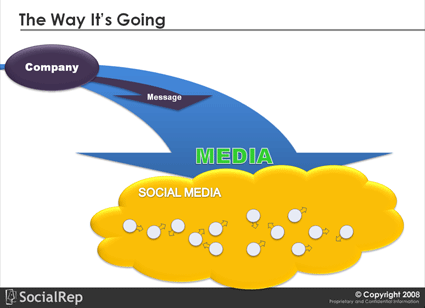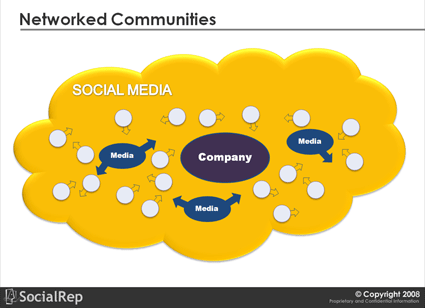Another post in reply to Venkat, and his comment on this thread.
Let’s start breaking this down a little to see if we can find the core.
1. Marketing is all about facilitating an exchange of value. If I can convince you of the value of my offering, we’ll make an exchange.
2. The “convincing” part of marketing can take all manner of forms, from soft requests and artful commercials to hard requests and even expertly constructed situations (economic, social, physical ) where you have, or perceive yourself to have, little alternative but to engage in exchange. (e.g. I need a smoke; I need a memory card compatible with this device.)
3. Each party in an exchange of value, at least in most cultures, is motivated to seek an advantage. I want you to pay more, you want to pay less, and there are many opportunities on both sides to try and game the exchange.
4. Our economy system is hardwired from top to bottom to drive growth. We could have a separate argument over whether this is a fundamental human drive, but clearly the economic drive is wired into our system at the most fundamental levels.
Okay. So, why did I choose those points to make? If you go back to earlier days of history–let’s take medieval England for example–the means of production for any product you were likely to buy, were very close to the marketplace where they were bought and sold. Supply was generally limited. Anyone who was selling in the marketplace was overwhelmingly likely to be known by reputation to the community. You had far fewer alternatives for what you could buy, but you knew pretty well going into the exchange what the playing field was.
As technology enabled producers to create ~more~, it also enabled them to create the means to transport to new markets, or gain new raw materials–for example, the ships that allowed English traders to connect with Dutch markets. The further the market from the production source, the less likely consumers were to know the reputation of the manufacturer. So brands became increasingly important proxies for reputation. And as the remote markets became larger, the need grew to create technology to be a proxy for putting up your stall and shouting your wares. First it was printing that allowed you to push your ad into the hands of people you might never meet, then increasingly efficient mechanisms to reach more and more people.
What I’m interested in is how the relationship between businesses and buyers changed with this growth, how it was enabled by technology, and how it impacts the social fabric of day to day life.
My thesis is that the relationship between businesses and buyers is fundamental, and goes back to the earliest days of social life on earth, accelerating with the division of labor. I have something you need, and vice versa. It’s a fundamental social contract at the very core of human life. But the further technology took us in pursuit of growth, the more imbalanced the contract became, due only, I expect, to the inherent expense of technology–especially in its early phases. Since only businesses, governments, institutions could afford the cost of production, advertising, transportation, they had a massively asymmetrical advantage over consumers. Since, as stated above, there’s an inherent motive to maximize the exchange in your own favor, and an equally inherent motive to grow, businesses have used that advantage (better than governments and institutions) to progressively create the machinery to make the exchange of value ever more efficient–turning consumers effectively into a fungible commodity. To put it bluntly, consumers have become little more than disposable batteries for business. And if you spend enough time in the machinery of modern corporate marketing, you can appreciate how masterfully this machinery can work. In its best incarnations, there is real value and joy on the part of the consumer (Apple products, for example), but make no mistake that the machinery is tuned to maximize the efficiency of converting customers into cash. I’m not putting moral judgment on it, I’m simply saying that’s what we’ve created.
The next part of my thesis is that social media is little more than a signifier that something in this equation has fundamentally changed. Social media is not the cause, it’s the reflection of a cause far deeper than most people realize. And there’s an interesting irony at the heart of it. Because of business’s fundamental drive to grow, they’ve sought and developed new markets for some of the very technology that lent them so much power. They’ve increasingly made computers, communications, production and transportation technology cheaper, more powerful, easier to use for ordinary consumers–not out of the goodness of their hearts, but because there were huge profits to be made doing so. But as soon as consumers got the means of connecting and communicating on a massive scale, the inherent advantage businesses owned began to unravel.
It’s an important part of my thesis that what we’re experiencing is not ~new~, we’re simply seeing the balance of power between buyer and seller shift back to a more level state. Rather than be influenced by your marketing, I can compare notes with other consumers. Rather than have only one option for a product, I now have access to many sources from other places.
So part of my tentative conclusion is that businesses adopting social media as just another new means of influencing customers will not be productive, because the real shift is much deeper than just an adoption of technology. Human beings have been chaffing under the assymetrical power that businesses have used to turn them into disposable batteries, and social media is simply a reflection of how powerful that tide has become once the means to unleash it emerge. This isn’t idle speculation–we’re seeing some of the biggest industries of our lifetime buckle under a new reality where consumers have greater choice, greater access to knowledge, and a growing realization of the opportunities to flex their power. And I think one big part of the equation is also a new realization of the depth of meaning available in the interaction with a broader social group. Look at how many people are thinking more deeply about who they are, even if only for the purpose of creating a Facebook profile, or finding a voice on a blog. Again, I think this is a very real phenomenological shift, not just a surface trend of Web 2.0.
So against that backdrop, my point is that businesses need to have a deeper understanding of what’s really shifting in the marketplace. The “Magnificent Machinery” of turning customers into cash is being challenged. Businesses need to look carefully at the inherent mindset of “acquiring” “targets” with their sales “force”, and start understanding how their markets are becoming more like real communities, where businesses need to find a role that adds real value for consumers.
Let me say really clearly that this isn’t fuzzy humanistic and wishful thinking. I think there is a fundamental need for business to create products that people both need and want. I think there is a fundamental need for businesses to advocate on their own behalf, and to develop core competencies and ultimately new products based on a vision and not just a servile response to market requests. But they need to understand that the old asymmetry that allowed so much power over consumers is eroding, and eroding quickly.



